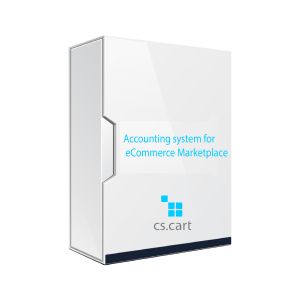The Accounting system for an eCommerce marketplace is a comprehensive solution designed to help manage the business effectively by streamlining financial management practices for businesses online. This system further helps both marketplace owners and sellers track their transactions, revenues, expenses, and taxes, and generate financial reports. Some key accounting processes are automated, and manual effort is reduced to achieve accuracy in keeping financial records.
1. Multi-Vendor Support
- The system is designed to trace financial data across multiple sellers in the marketplace with the complexities of multi-vendor marketplaces. Each seller has an account; this way, owners of the marketplace keep track of transactions, revenue, and commission of each seller. Individual seller metrics are also available in their own dashboard, enhancing the level of transparency and trust in the marketplace ecosystem.
2. Automated Transaction Recording
- This function automatically records all sales, refunds, and every commission that is earned into the system. All transactions are done in real-time, which eliminates manual entry and errors during processing. The system figures the commission fees and draws from payments and attaches corresponding records to the right account, thereby giving actual data without burdening it any further administratively.
3. Payment Gateway Integration
- This system will integrate with the most used payment gateways by pulling data from the payments, refunds, and transaction fees. It is very efficient to automate the flow of payment directly from the gateway into your accounting system and avoid any time on manual entry. Supporting multiple gateways shows flexibility and choice in the options provided to both marketplace owners and sellers in the management of their business.
4. Inventory and Cost Management
- It closely integrates with the accounting function and keeps track of the amount of product and related costs, enabling it to make direct valuation. The level of the inventory and value of cost on products can be traced for the system to know its profit margin on a given product. This further alerts sellers on low inventory levels and, thus, will restock the goods at the earliest and have a consistent flow of products and income.
5. Sales and Expense Reporting
- The system provides rich, configurable reports to marketplace owners and sellers for viewing their sales performance and expense, profitability, and tax obligation. The report can be set as a daily, weekly, monthly, or annual one to provide marketplace stakeholders with a critical understanding of the performance in terms of financial activity. Visualisation of data will lead users to make decisions and take action.
6. Tax Management
- This feature accommodates regional, complex tax regulations that automatically calculate taxes based on categories of products, the location of a seller, and applicable rules. This allows each seller to adhere to local regulations, reducing the risk of non-compliance. A marketplace owner benefits from one centralised tax reporting for all the platform, making tax time easier to handle and lowering the risk of error or omission.
7. Reconciliation Tools
- Reconciliation tools check data from various sources, including payment gateways and bank statements, against internal records to ensure all transactions tally. This function ensures the discovery of discrepancies, verifies transactions, and prevents misstatements to financial statements. Users can reconcile accounts regularly and have a better view of the marketplace's finances.
8. User Role Management
- This enables the system to have the role-based access control with tailor-made permissions based on user roles within the marketplace, be it an admin, a seller, or an accountant. This feature is known to improve security and business efficiency by only allowing users to access data they require while maintaining confidentiality, especially for sensitive financial information, thus supporting privacy compliance regulations.
9. Currency and Multi-Country Support
- To support the various global marketplaces, the system supports several currencies and also updates the foreign exchange automatically. The system has multiple tax rules in various countries to allow the marketplace to run in compliance across regions. The marketplace owners can extend their marketplace across the globe with accuracy regarding tax, revenue, and expenses based on currency.
10. Customisable Invoice Generation
- Every transaction is automatically invoiced with this system, which may then be customised with elements like logos, colour schemes, and specific information fields that the seller might require. Sellers can choose whether their transactions would be automatically invoiced or manually invoiced. Thus, it is flexible enough for sellers. These invoices benefit the buyer's experience by offering a professional, branded document on each purchase while making sure that sellers keep records on tax and accounting matters.
This accounting system is meant to help eCommerce marketplace businesses run financial operations efficiently by offering crucial automation and insights that would streamline financial processes and ensure regulatory compliance. Every feature is designed to reduce manual workload, improve data accuracy, and offer the flexibility needed for both local and global operations.
- Multivendor Regular
- Multivendor Plus
- Multivendor Ultimate
- Single Vendor
- Cs-cart Ultimate
- 4.15.1
- 4.14.3
- 4.14.2
- 4.14.1
- 4.13.3
- 4.13.2
- 4.13.1
- 4.12.2
- 4.12.1
No data found
No reviews found

 Marketplace Solutions
Marketplace Solutions

